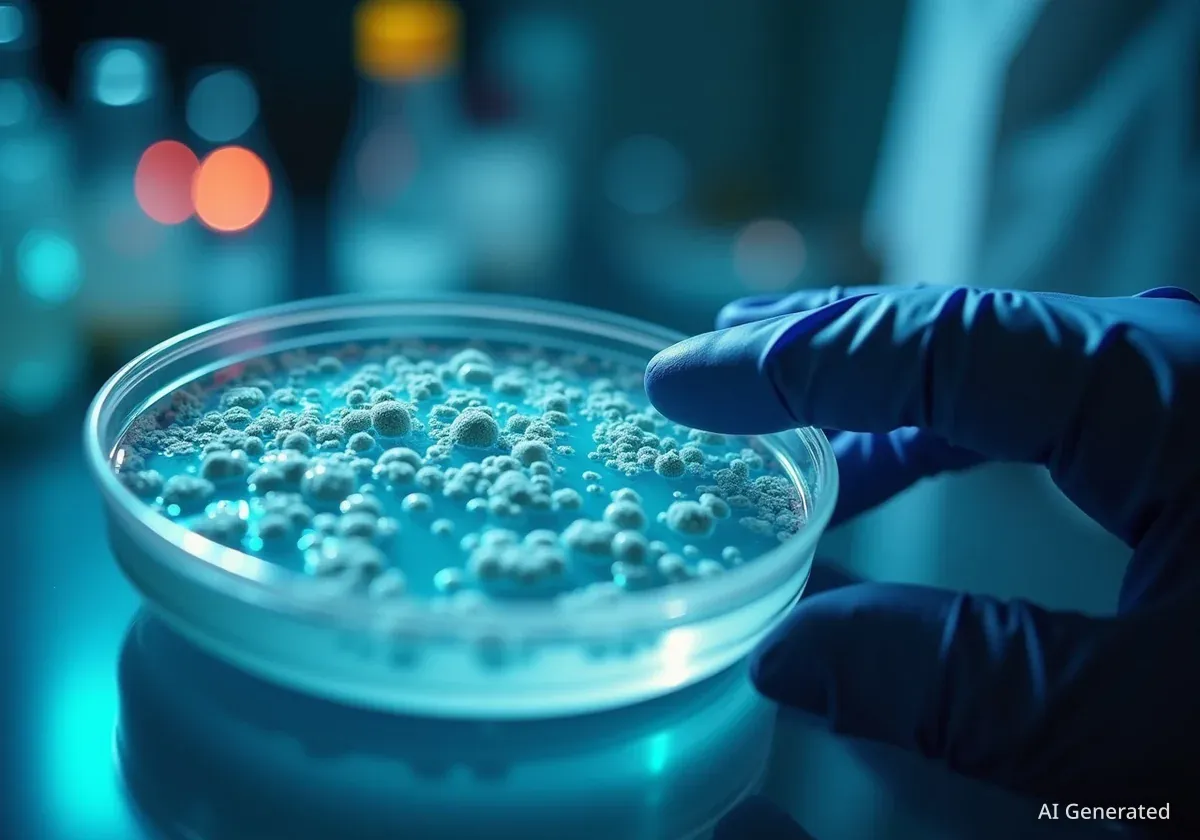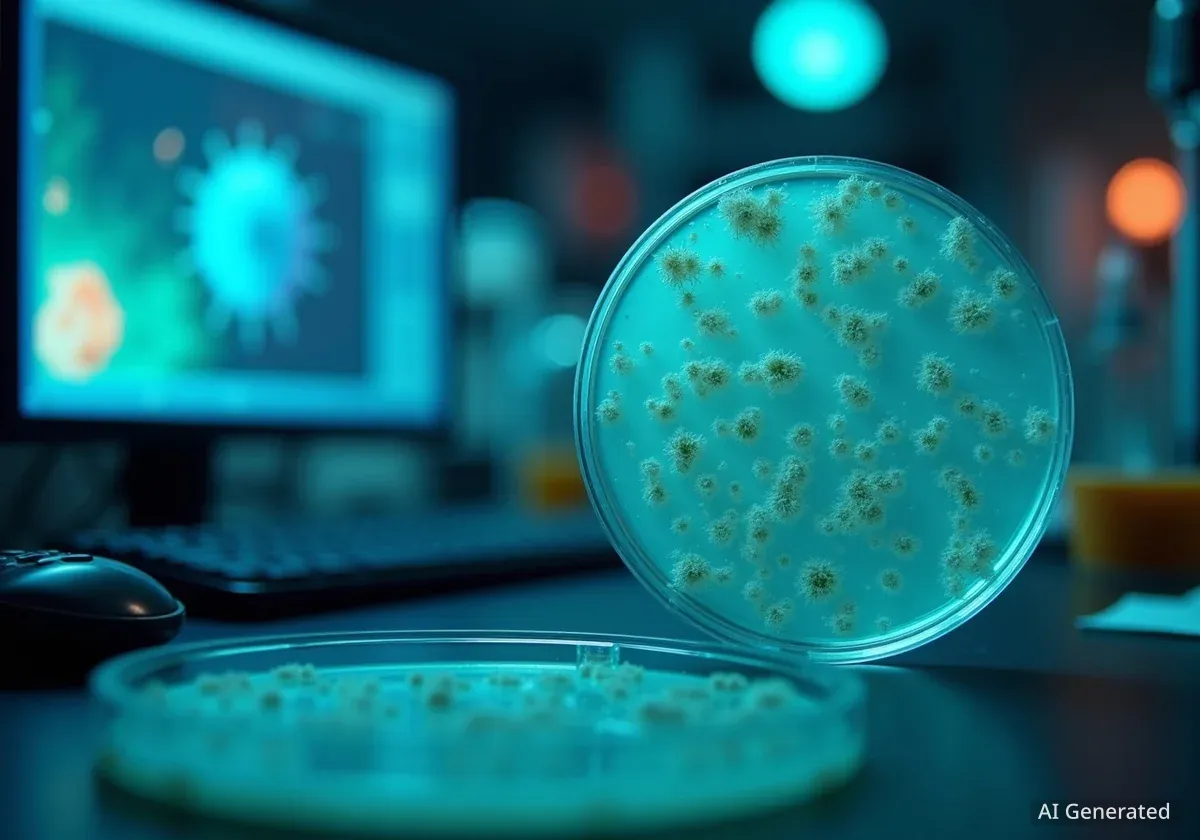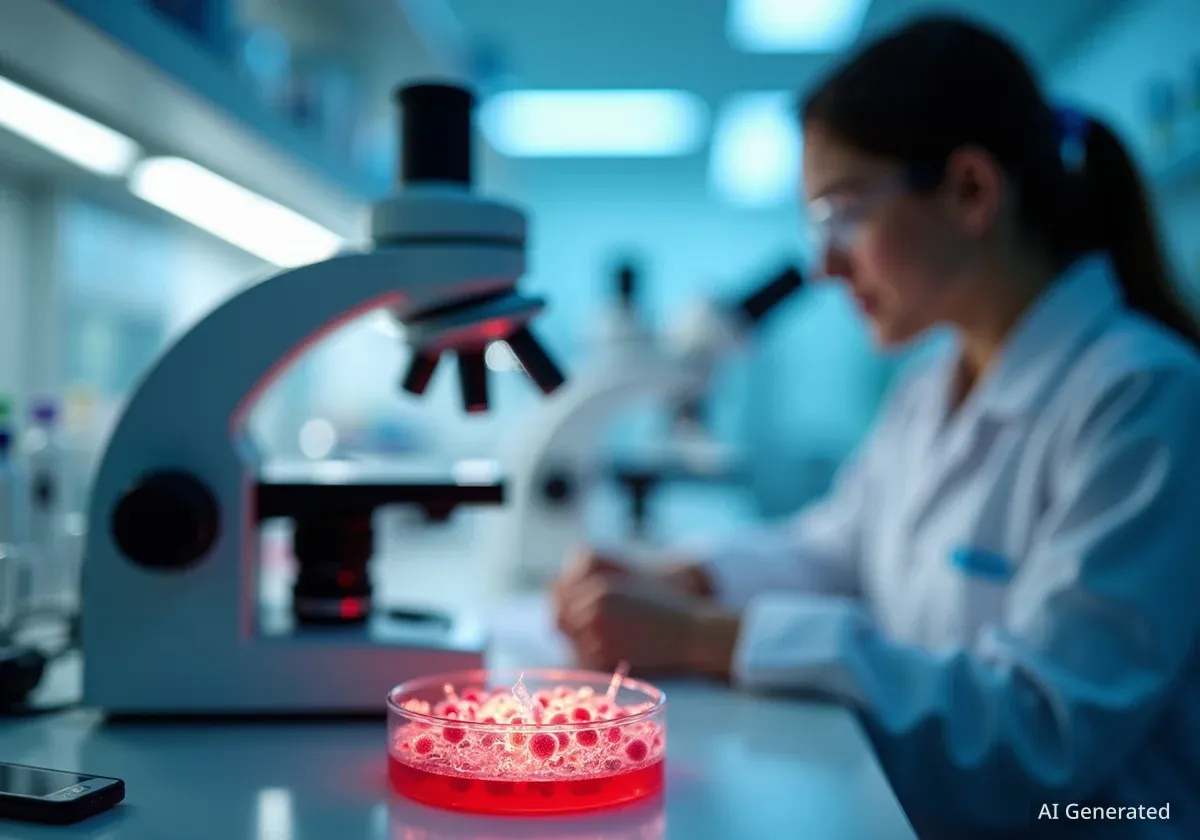Researchers at Stanford University have developed an artificial intelligence model capable of designing functional biological viruses from scratch. In a recent study, the team demonstrated that these AI-generated viruses could be synthesized in a lab and were effective at targeting and destroying specific bacteria, highlighting a significant milestone in synthetic biology.
While this breakthrough holds promise for developing new medical treatments, experts are also raising urgent concerns about its dual-use potential, particularly for the rapid creation of novel bioweapons. The development places new pressure on governments and regulatory bodies to adapt to the accelerated pace of AI-driven biological research.
Key Takeaways
- Stanford researchers used an AI model named Evo to invent new DNA sequences for viruses.
- The AI-designed viruses were successfully synthesized and proven to be functional in laboratory tests.
- These artificial viruses were able to infect and kill strains of E. coli bacteria, with some being more potent than their natural counterparts.
- The research has sparked a debate on the potential for AI to be used for creating bioweapons, prompting calls for new safety protocols and defensive strategies.
The Stanford Experiment Detailed
The research, which is not yet peer-reviewed, centered on a specialized AI model called Evo. Unlike general-purpose large language models such as ChatGPT that are trained on vast amounts of text, Evo was trained exclusively on a biological dataset consisting of millions of bacteriophage genomes.
A bacteriophage is a type of virus that specifically infects and replicates within bacteria. For this experiment, the scientists focused on a well-documented phage known as phiX174, which is known to target the common bacteria E. coli.
Using the patterns learned from its training data, the Evo model generated 302 new candidate genomes based on the structure of phiX174. The research team then moved from digital design to physical creation by chemically assembling viruses based on these AI-generated DNA blueprints.
From Code to Reality
Out of the 302 AI-designed virus genomes, researchers successfully synthesized 16 that proved to be functional. These lab-created viruses were able to infect and kill the targeted E. coli strains, confirming the AI's ability to produce viable biological designs.
The results showed that not only did the AI create working viruses, but some of the synthetic variants were even more effective at killing bacteria than the naturally occurring phiX174 virus they were based on. This demonstrates AI's potential to optimize biological functions beyond what nature has produced.
A Dual-Use Dilemma
The success of the Stanford experiment has ignited a serious discussion about the implications of this technology. While the immediate goal may be to create beneficial tools, such as viruses that can fight antibiotic-resistant infections, the same methods could be applied for harmful purposes.
In an analysis for the Washington Post, Tal Feldman, a Yale Law School student with a background in AI modeling for the federal government, and Jonathan Feldman, a computer science and biology researcher at Georgia Tech, warned of the significant risks.
"There is no sugarcoating the risks," the pair wrote. "We’re nowhere near ready for a world in which artificial intelligence can create a working virus, but we need to be — because that’s the world we’re now living in."
Their primary concern is that malicious actors could use similar AI models, trained on open-source data of human pathogens, to rapidly design novel biological weapons. The speed at which AI can generate these designs could overwhelm the capacity of public health systems and governments to respond effectively.
The core issue is that AI dramatically shortens the timeline for designing dangerous biological agents, a process that once required extensive specialized knowledge and years of trial and error. This accessibility lowers the barrier to entry for creating potential bioweapons.
Forging a Path Forward
In response to this emerging threat, experts argue that a proactive strategy is essential. The same AI technology that creates the risk must also be harnessed to build defenses. This involves a multi-pronged approach to outpace potential threats.
AI-Powered Countermeasures
The most immediate proposal is to use AI to accelerate the development of medical countermeasures. This includes designing new antibodies, antivirals, and vaccines tailored to combat novel threats, including those that could be generated by other AIs. While this work is already underway in some labs, it requires vast amounts of high-quality biological data to be effective.
The Data Bottleneck
A major obstacle to developing AI-driven defenses is data accessibility. According to the Feldmans, crucial biological data is often "siloed in private labs, locked up in proprietary datasets or missing entirely." They argue that the federal government must make the creation of large, high-quality, and accessible biological datasets a national priority to fuel defensive research.
Building Critical Infrastructure
Beyond data, a robust infrastructure for manufacturing and deploying these AI-designed medicines is necessary. Experts suggest that the private sector alone may not invest in building manufacturing capacity for emergencies that might not occur. Therefore, government leadership and funding are considered essential to establish a responsive production pipeline for vaccines and treatments.
Regulatory Modernization
Finally, the existing regulatory frameworks, such as those managed by the Food and Drug Administration (FDA), are seen as too slow to handle the speed of AI-driven threats. A complete overhaul is needed to create faster pathways for approving countermeasures during a crisis.
Suggested reforms include new fast-tracking authorities that would allow for the provisional deployment of AI-generated medicines and clinical trials. These accelerated approvals would need to be paired with rigorous post-deployment monitoring and safety measures to manage risks effectively.
The Urgency of the Situation
While the Stanford study has not yet completed the peer-review process, its findings represent a clear signal that the era of AI-designed biology has arrived. The capabilities demonstrated by the Evo model are a proof-of-concept that will likely be replicated and advanced by other research groups around the world.
The discussion comes at a time when public health infrastructure faces numerous challenges, including funding cuts to agencies like the Centers for Disease Control and Prevention (CDC). This new technological reality underscores the need for renewed investment and strategic planning in biodefense.
The ability of AI to generate novel viruses presents both immense opportunities for medicine and significant security risks. Navigating this future will require a coordinated effort from scientists, policymakers, and the public to establish safeguards that ensure the technology is used to benefit humanity while mitigating its potential for harm.




